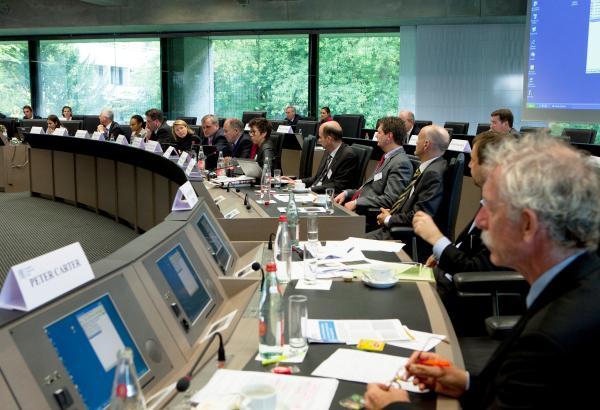
Sustainability takes centre stage at EIB mining seminar
The widely-reported images of the Copiapó mine collapse in Chile are still vivid in people’s minds. Although not an EIB project, the Copiapó mine incident serves as a reminder of the social and environmental threats, including the infamous ‘resource curse’ that exist in countries not using their natural endowments wisely. It was in this context that on 6 October 2010, the EIB held a seminar on the developmental, environmental and social impacts of three EIB-financed mining projects, bringing together industry experts from Lumwana (Zambia), Kenmare (Mozambique) and Ambatovy (Madagascar), as well as specialised NGOs, EU Member State and European Commission representatives.
The EIB has a long record of supporting mining projects in African, Caribbean and Pacific countries with EUR 650m signed to date. The Bank is keen to address stakeholder concerns about the sustainability of mining projects, so speakers were encouraged to describe what is happening on the ground and show where the continuing challenges are.
“We didn’t want a valuable mine with poverty sitting outside,” an industry representative explained. The three mines put a strong focus on employment with hundreds if not thousands of jobs created by each mine. Efforts are made to ensure that the majority of these jobs go to local people. Some of these jobs will eventually disappear, but planning for sustainability will ensure that the communities diversify well in time for the eventual mine closure and can continue to benefit from the upgrades in infrastructure, skills and local economy. Perhaps most importantly for the quality of life of affected peoples, all mines had introduced comprehensive health programmes to benefit the workers, their families and impacted communities. Malaria programmes run alongside HIV/AIDS prevention clinics, while local hospitals are upgraded or built by the mining companies.
The protection of the environment is another crucial aspect. “We did not want to leave a scar on the earth,” the industry stressed, emphasising the importance of good compliance, monitoring programmes, environmental management systems, water management, carbon footprint measurement and the use of electric trucks and renewable energy sources to name but a few. Moreover, it was underlined that without the financial support and know-how of multilateral lending institutions such as the EIB, it would have been extremely difficult, if not impossible to raise the long-term project finance needed to build the mines, which often take more than ten years to develop.
Civil society representatives applauded the social programmes of the mining companies and noted that sustainability was gaining traction. One NGO representative commented that “these successes are in contrast to a bad reputation. Telling a better story of what the industry does is the challenge” and that the, “the EIB's principle of lending selectively contributes to society and the environment and, eventually, to sustainable development”.
Participants’takeaway impressions were that although challenges remain, “we have come a long way together and learned how to do things better”. If managed in a modern and sustainable manner mines can help preserve the environment and create wealth for both states and for the local people in Africa.